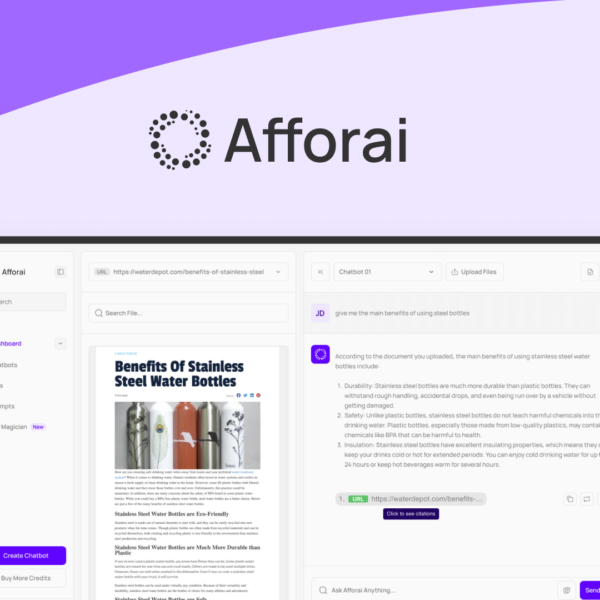High level companies are defined by their strong leadership, innovative practices, and significant market influence. They impact industry trends, face challenges like market saturation, and must focus on sustainability, advanced technologies, and customer engagement to ensure future success.
High level company strategies are essential for any business aiming to rise above their competition. By understanding what makes a company thrive in today’s fast-paced world, organizations can leverage these insights to enhance their operations. In this article, we’ll dive deep into the various facets of high level companies, reveal key strategies that contribute to their success, and examine the challenges they face in maintaining industry leadership.
Understanding High Level Companies
Understanding High Level Companies is crucial for anyone looking to navigate the complex landscape of modern business. These companies often set industry standards and redefine what it means to achieve success. They commonly excel in areas such as innovation, customer engagement, and operational efficiency.
Characteristics of High Level Companies
High level companies are typically characterized by their strong leadership, a clear vision, and a commitment to innovation. They invest in research and development to stay ahead of market trends and continuously adapt to changing consumer demands.
Importance of Vision and Leadership
Effective leadership plays a pivotal role in the success of high level companies. Leaders who inspire their teams foster a culture of excellence and accountability, which often translates into better business outcomes. A clear company vision helps guide decision-making and aligns the entire organization towards common goals.
Innovation as a Driving Force
Innovation is at the heart of high level companies. They are not afraid to take calculated risks to explore new ideas or business models. This commitment to innovation enables them to create unique value propositions that set them apart from competitors.
Customer Engagement and Market Impact
High level companies excel in understanding their customers’ needs and preferences. By leveraging data analytics, they can craft personalized experiences that enhance customer satisfaction and loyalty. This level of engagement can significantly influence market trends and consumer behavior.
In summary, high level companies embody the principles of strong leadership, a commitment to innovation, and an unwavering focus on customer engagement. Understanding these elements provides valuable insight into why they outperform their competitors and maintain their positions as industry leaders.
Key Strategies for High Level Companies

Key Strategies for High Level Companies are essential for maintaining competitive advantage and achieving sustained success. These strategies encompass various aspects of business operations, from marketing to employee engagement.
1. Embracing Innovation
High level companies prioritize innovation by investing in research and development. This helps them stay ahead of market trends and anticipate customer needs. Companies should regularly assess and adapt their products or services to meet evolving demands.
2. Focus on Customer Experience
Creating a remarkable customer experience is a top priority. High level companies gather feedback to understand clients better and make improvements. Personalized marketing and excellent customer service are key components that enhance customer satisfaction and loyalty.
3. Data-Driven Decision Making
Utilizing data analytics enables companies to make informed decisions. By analyzing market trends, customer behavior, and performance metrics, businesses can identify opportunities for growth and areas needing improvement.
4. Employee Engagement and Development
Investing in employee development is crucial for high level companies. Companies that prioritize training and career advancement often see increased productivity and morale. Engaged employees are more likely to contribute positively to the organization, driving overall success.
5. Sustainability and Social Responsibility
High level companies recognize the importance of sustainability and corporate social responsibility. By adopting eco-friendly practices and giving back to the community, they build a positive reputation and foster customer loyalty.
By implementing these strategies, high level companies can not only achieve their business objectives but also inspire industry-wide change. Staying focused on innovation, customer experience, data utilization, employee development, and sustainability will position them for lasting success.
Impact of High Level Companies on Market Trends
Impact of High Level Companies on Market Trends can be seen in various ways, as these organizations often set the pace in their industries. Their strategies, innovations, and consumer engagement influence not just their performance but the direction of the entire market.
1. Shaping Consumer Expectations
High level companies play a significant role in shaping consumer expectations. By consistently delivering high-quality products and exceptional service, they raise the bar for performance. Customers begin to expect similar standards from all competitors, driving overall industry improvement.
2. Driving Innovation Across Industries
These companies are typically at the forefront of technological advancement. Their commitment to innovation encourages competitors to adopt new technologies and practices, thus pushing the entire market to evolve. An example of this can be seen in the tech industry, where giants introduce products that reshape consumer behavior.
3. Influencing Market Dynamics
High level companies often have substantial market power, allowing them to influence supply and demand dynamics. Their decisions in pricing, production, and distribution can sway market trends, creating ripple effects throughout the industry.
4. Setting Sustainability Standards
In recent years, sustainability has become a paramount concern. High level companies are leading the charge by implementing environmentally-friendly practices. This proactive approach not only enhances their reputation but also encourages other businesses to follow suit, creating a broader societal shift towards sustainability.
5. Establishing New Market Niches
With their resources and expertise, high level companies often create new market niches. By identifying unmet needs or emerging trends, they can cater to specific segments, thereby reshaping market landscapes and opening doors for new businesses.
The cumulative effect of these influences contributes to a more competitive and dynamic marketplace. High level companies not only elevate their own market positions but also elevate the performance and innovation standards across their sectors.
Challenges Faced by High Level Companies

Challenges Faced by High Level Companies are numerous and can hinder their ability to maintain market dominance. As these organizations strive for excellence, they encounter various obstacles that can affect their performance and growth.
1. Market Saturation
As industries grow, competition becomes fierce. High level companies often face market saturation, where products and services offered become similar, making it difficult to stand out. They must constantly innovate to differentiate themselves and retain market share.
2. Adapting to Rapid Technological Changes
The fast pace of technological advancement can be daunting. High level companies must continuously adapt and invest in new technologies to stay ahead. Failing to do so may result in losing relevance and competitive advantage.
3. Regulatory Compliance
High level companies must navigate a complex web of regulations and compliance requirements. Staying compliant with changing laws can be challenging, requiring significant time and resources. Non-compliance can lead to legal issues and reputational damage.
4. Talent Acquisition and Retention
Finding and keeping top talent is a persistent challenge. High level companies often compete for skilled professionals with other leading organizations. Developing attractive work cultures and offering competitive benefits are essential to attract and retain the best employees.
5. Global Economic Fluctuations
High level companies are affected by global economic conditions. Fluctuations in currency, trade policies, and geopolitical events can significantly impact their operations. They must remain agile and responsive to navigate uncertainties in the global market.
These challenges require strategic planning and a proactive approach. By addressing these issues head-on, high level companies can continue to thrive and lead their respective industries.
Future of High Level Companies
Future of High Level Companies is an exciting topic to explore as these organizations continue to shape the landscape of business in significant ways. Understanding the trends and transformations that lie ahead can provide valuable insights for both leaders and aspiring entrepreneurs.
1. Increased Focus on Sustainability
High level companies are likely to embrace sustainability even more in the future. As consumers become increasingly eco-conscious, these organizations will need to integrate sustainable practices into their operations. This will not only help protect the environment but also meet the expectations of socially responsible consumers.
2. Adoption of Advanced Technologies
The future will see high level companies adopting advanced technologies such as artificial intelligence, machine learning, and automation. These tools will help them improve efficiency, streamline processes, and enhance customer experiences. Staying ahead of technological advancements will be crucial for maintaining a competitive edge.
3. Emphasis on Remote Work and Flexibility
The pandemic has significantly changed traditional work environments. Moving forward, high level companies will continue to adopt flexible work policies. This shift can help attract top talent and foster a better work-life balance, enhancing overall employee satisfaction and productivity.
4. Enhanced Customer Engagement through Personalization
High level companies will invest more in personalized marketing strategies. Leveraging data analytics, they can better understand consumer preferences and deliver tailored experiences. This approach builds customer loyalty and strengthens brand reputation.
5. Collaboration and Partnerships
The future will likely see an increase in collaboration among high level companies. Strategic partnerships can lead to mutual growth, innovation, and shared resources. Collaborating with startups and tech firms can help larger companies harness new ideas and adapt swiftly to market changes.
By embracing these trends, high level companies can position themselves for success in a dynamic and evolving marketplace. Adapting to change will be key, as they continue to influence market standards and consumer expectations.
In Conclusion: The Path Ahead for High Level Companies
High level companies are key players in shaping the future of business. They face many challenges, but they also have great opportunities to innovate and lead. By focusing on sustainability, embracing technology, and prioritizing customer engagement, these companies can thrive.
As they adapt to new trends and market demands, high level companies will continue to influence their industries positively. Staying flexible and open to change will be essential for any organization aiming for long-term success.
In a rapidly evolving world, embracing the future can lead to greater achievements and growth for high level companies.
FAQ – Frequently Asked Questions about High Level Companies
What defines a high level company?
A high level company is typically characterized by strong leadership, innovative products or services, and a significant influence in its market.
How do high level companies impact market trends?
They shape consumer expectations, drive innovation, and influence pricing and market dynamics through their strategies and operations.
What challenges do high level companies commonly face?
They face challenges such as market saturation, adapting to technological changes, regulatory compliance, talent acquisition, and global economic fluctuations.
What strategies can high level companies adopt for future success?
They can focus on sustainability, embrace advanced technologies, emphasize customer engagement, and foster strategic collaborations.
Why is innovation important for high level companies?
Innovation allows these companies to stay competitive, meet changing consumer demands, and differentiate themselves from competitors.
How can high level companies enhance employee engagement?
By investing in training and development, creating a positive work culture, and implementing flexible work policies, they can boost employee morale and productivity.




